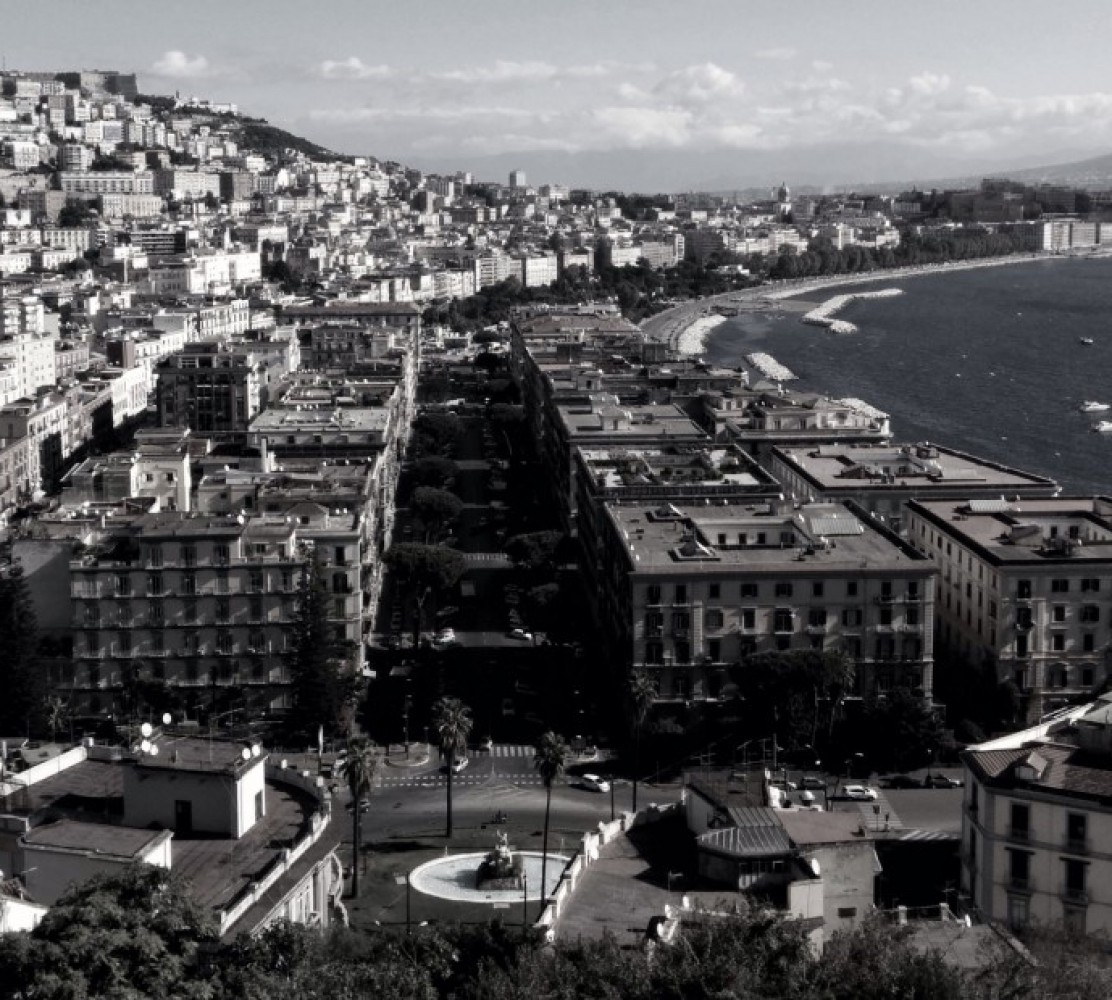The high sun, the yellow tinge of the stone, the steep descent of the vico, the washing at the windows and the sea of the Bay beyond. You couldn’t be anywhere but Vomero, Naples, as seen today by my friend Christian.


The high sun, the yellow tinge of the stone, the steep descent of the vico, the washing at the windows and the sea of the Bay beyond. You couldn’t be anywhere but Vomero, Naples, as seen today by my friend Christian.


OK, Capodimonte won this accolade back in 2015. But I would still encourage you to take a short walk by 4K video through this huge, rambling, atmospheric, overgrown ex-Royal park on a high hill above Naples. It’s a perfect place to jog, picnic, play with your kids, take a weekend stroll, have a furtive assignation, or walk off a large lunch.
Or better still to find a quiet place for inner reflection, away from the hectic city below.

Naples is struggling to cope with its heaviest snowfall for over 60 years, bemusing the locals, shutting the airport, closing schools and offices, and causing traffic chaos.
For a comparison of the conditions, below is the same scene in snowy Piazza del Plebiscito, separated by 62 years. The first famous image by Vittorio Pandolfi on the left is from 1956; the second on the right is by Fabio Cozzolino from 2018 who reproduces the original photograph, down to the car in the foreground. And the umbrellas in the background.
More modern pictures of Naples (and Rome) in the snow here.

An atmospheric short film showing Vesuvius after its recent dusting of snow. Via Dr1 aerialview

Oh Rome! My country! City of the soul!
The orphans of the heart must turn to thee,
Lone mother of dead empires! and control
in their shut breasts their petty misery.
What are our woes and sufferance? Come and see
The cypress, hear the owl, and plod your way
O’er steps of broken thrones and temples, Ye!
Whose agonies are evils of a day —
A world is at our feet as fragile as our clay.
Byron. Childe Harolde. IV. LXXVIII. Statue of Byron in Villa Borghese Gardens.


This well-executed, politically-minded graffiti made me smile when I snapped it on Saturday in a back alley near the Museo Diocesano in the Centro Storico in Naples. The skeletal figures are taken from the workers on strike in the famous painting Il Quarto Stato – The Fourth Estate (1901) by Giuseppe Pellizza da Volpedo which is in the Museo del Novecento, Milan.
More on Naples graffiti, love it or loath it, here. There is even a Napoli Street Art Twitter feed you can follow here.

On a grey December morning in Naples, relax and enjoy a sunny flight over the lovely area of Bacoli, Baiae and the ‘lofty promontory‘ of Capo Miseno, on the north west corner of the Bay of Naples.
The Roman poet Horace apparently exclaimed ‘with rapture‘ that: ‘There is nothing in the world to compare to splendid Baiae‘ where the ‘various temptations on offer were as persuasive and seductive as the music of the sirens‘.
It’s a lot quieter today but well worth a visit out from Naples.
More Naples drone footage here.

A tongue-in-cheek, Neapolitan language song written by Renato Carosone in the late 1950s, Tu vuò fà l’americano is about a young wannabee who affects a contemporary American lifestyle (sharp clothes, whisky and soda, rock-and-roll, baseball and Camel cigarettes) but who relies on his parents for money. Seen as a satire on the process of Americanisation in post-war Italy, the lyrics most damningly accuse:
‘How can your girl friend understand you, if you speak to her in half American when you make love under the moon. Where do you get off saying ‘I love you?’
Sung famously, in English, by Sophia Loren in ‘It Started in Naples‘, and also appearing in the Talented Mr Ripley, lyrics in both Neapolitan and English are below. Continue reading


Ugo Foscolo, an Italian patriot, pre-Romantic and atheist, died in exile in London. After the Risorgimento his remains were returned to Florence. His poem To Evening (Alla Serra) captures his restlessness, his longing for the peace that evening brings to the world, whilst foreshadowing his eventual death that will soothe his pains away.
Perhaps because you are the image
of the fatal quiet, your coming is so dear to me,
O evening! And whether gay summer clouds
and serene zephyrs court you
Or whether down from the snowy air
you bring long, restless nights to the world,
Always you descend invoked.
and you softly take hold of the secret paths of my heartYou cause me to wander with my thoughts upon the traces
That lead to eternal nothingness; and meanwhile
this evil time flies, and with it goes the swarms
Of cares with which it is destroying itself and me;
And the while I gaze upon your peacefulness
that warrior spirit which roars in me is sleeping.
Photograph of the Mezzogiorno partly under cloud, with lightning over Naples, by the US Astronaut Scott Kelly who is spending a year in space in the International Space Station.


A Flabellum in Christian liturgical use is ‘a fan of metal, leather, silk, parchment or feathers, intended to keep away insects from the consecrated Body and Blood of Christ and from the priest, as well as to show honour. The ceremonial use of such fans dates back to ancient Egypt’. They fell out of use in the Catholic liturgy in the 14th Century.
This exquisite 16th Century decorative example, in the Museo di Capodimonte, Naples comes from Ceylon (now Sri Lanka), is 20 inches high, made of ivory and:
has a long handle decorated with plant and animal motifs, with segmented ivory sticks arranged like spokes. The upper part portrays the neck and head of a bird, whose eyes are made up of tiny cabochon-cut sapphires, thereby concealing the central flanges.
Photograph: Imgur.